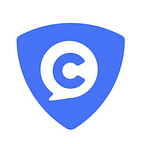From Multi-chain Wallets to Omnichain Wallets — Simple Upgrade or Disruptive Innovation?
Currently, multi-chain wallets are still the main form of product for crypto wallets. It is only since ComingChat launched its omnichain wallet that the concept has become more widely known. So, what exactly is an omnichain wallet? What is the difference between it and a multi-chain wallet?
Before we get into the omnichain wallets, it’s worth exploring a topic we’re all more familiar with: what’s the difference between PinDuoDuo and Taobao? Why has PinDuoDuo been able to steal the cake from Taobao in a red sea of e-commerce? This may seem irrelevant to this article, but the underlying logic behind it is actually very similar.
The sharing mode of “cutting a knife” and the resulting social fission have indeed contributed to PinDuoDuo’s success to a certain extent, but the deeper reason is actually the innovation of PinDuoDuo’s business model — from ‘people looking for goods’ to ‘goods looking for people’ in traditional e-commerce such as Taobao. It is this change in the underlying logic that makes PinDuoDuo have the advantage of crushing Taobao’s commodity price and completing the counterattack.
Returning to this article, when referring to the concept of omnichain wallet, many people will think that it can only support more public chains than a Multi-Chain Wallet and is a “more complete” Multi Chain Wallet, but it is not.
Similarly, we take ComingChat omnichain wallet as an example. ComingChat omnichain wallet can support EVM type public chains, bitcoin, dogcoin and other probability finality chains, substrate chains, Cosmos ecology, and non-EVM public chains such as Aptos and Solana. From this perspective, the ComingChat omnichain wallet can support all public chains. It is indeed better than many mainstream Multi-Chain wallets at present, but the true meaning of “omnichain” wallet is not here. We can understand this from the version update of ComingChat.
In the latest version, the ComingChat wallet page will directly display the top ten currencies ranked by market value (users can manage currencies, and add or delete currencies according to their own wishes). After clicking on a token (take AAVE as an example), Ethereum, Polygon and Fantom will appear on the top of the token page. Select and click one of them to transfer AAVE tokens on the chain.
This update is not only a simple change to the wallet interface but will completely rewrite the Multi-Chain Wallet in terms of user thinking and usage habits.
In fact, when all Web3 users use crypto wallets, what they really care about is the crypto assets they hold, not the public chain (Network) where the tokens are located. Existing Multi-Chain wallets display all the networks supported by the wallet on the homepage. If users want to find a certain token they hold, they must first identify the chain where the token is located, then click the network and select the token under the network. In comparison, the ComingChat omnichain wallet is more “direct”. Users first select a currency on the homepage and then select the network on the token page. That is to say, the omnichain wallet of “finding coins first, then finding chains” is the product form that really conforms to the core interests of the Web3 group.
In particular, for some tokens that exist on multiple chains at the same time, the omniChain Wallet fully demonstrates its advantages. Take the stablecoin USDT as an example, the existing mainstream public chains basically Mint the USDT on the network, that is, the USDT exists in Ethereum / Tron / BSC / OKC / Solana / Polygon/Avalanche /Arbitrum / KCC / bitcoin (Omni) and many other networks at the same time. This brings great trouble to users in current Multi-Chain wallets: sometimes users just want to transfer some stablecoins USDT without caring which chain it is on, but in Multi-Chain wallets, they must first consider and select a network and then decide to transfer stable coins on that network.
Imagine that you have RMB and USD assets. You have opened accounts in ten banks and hold ten bank cards at the same time. If you want to know the overall assets of RMB, you must find each bank card one by one, check and count the RMB balance on these cards. Obviously, this is complicated and anti-human. But in fact, this is now the Multi-Chain Wallet. Now, you don’t have to look for cards one by one and then change money. You only have two cards: an RMB account and a US dollar account. If you’re looking for RMB, you just need to select the RMB account to clearly see its asset distribution in dozens of banks. This is probably the true meaning of ComingChat omnichain wallet.
About ComingChat
ComingChat, a Web3.0 super app that supports the omnichain ecosystem and combines encrypted communication, social, wallet, NFT, decentralized digital identity, omnichain swap, bitcoin lending, and Discover, etc.
